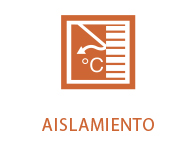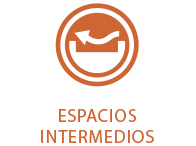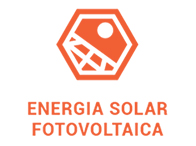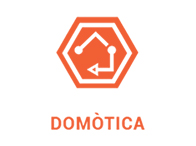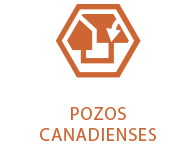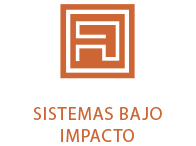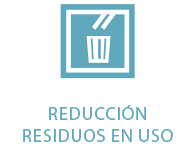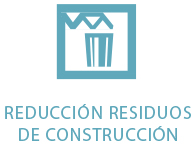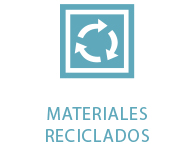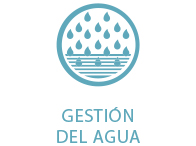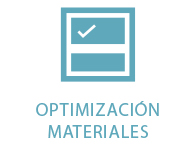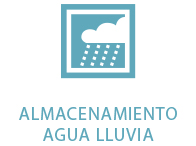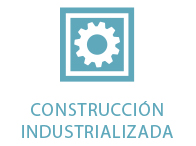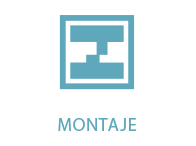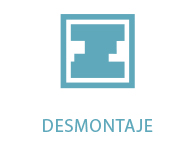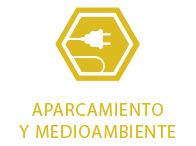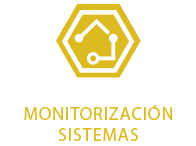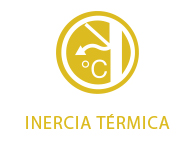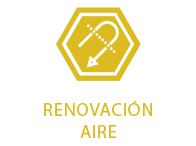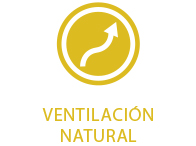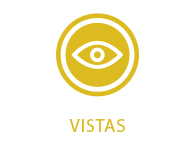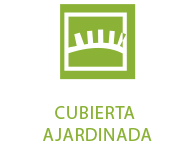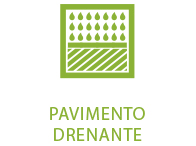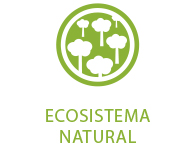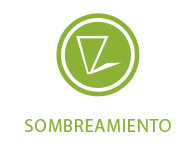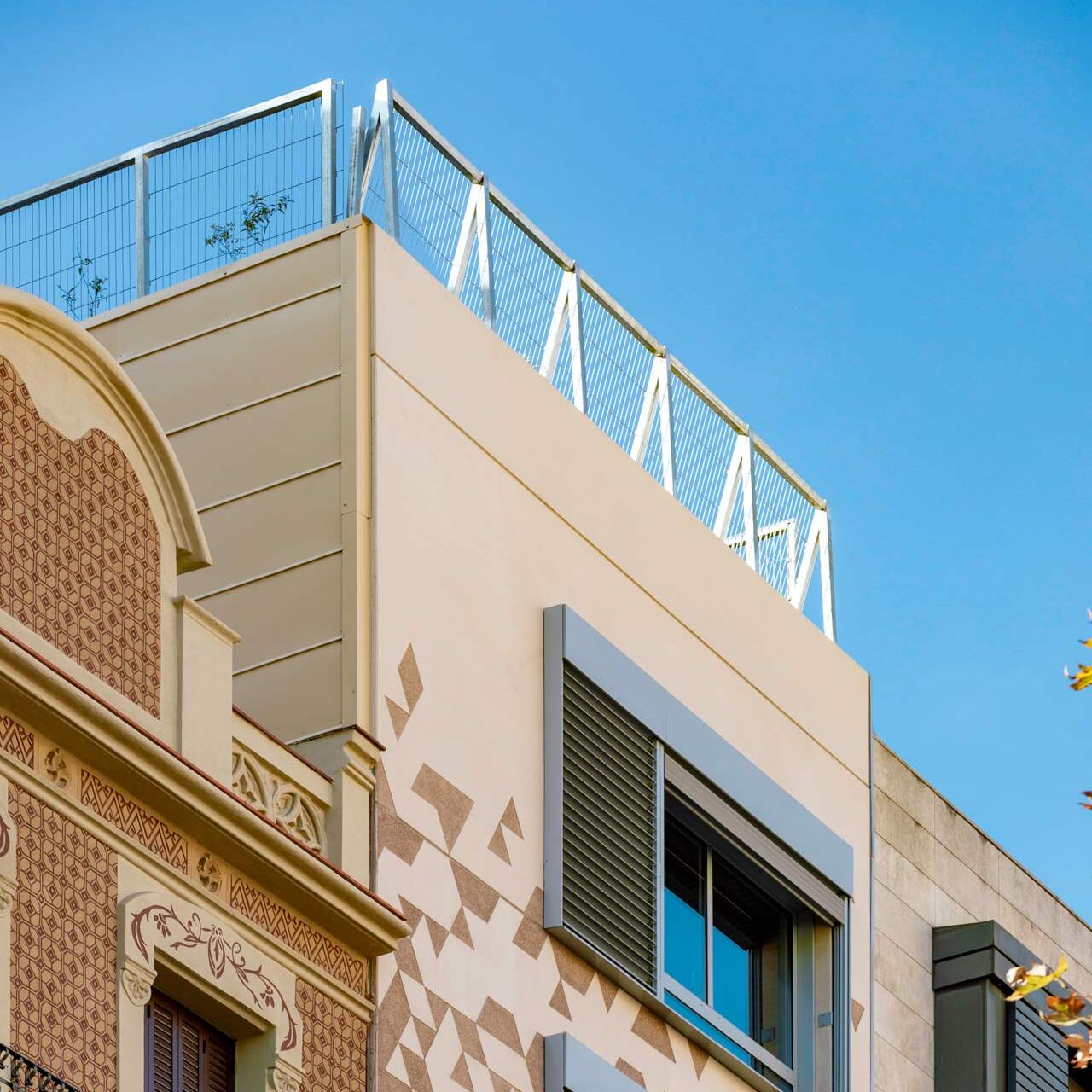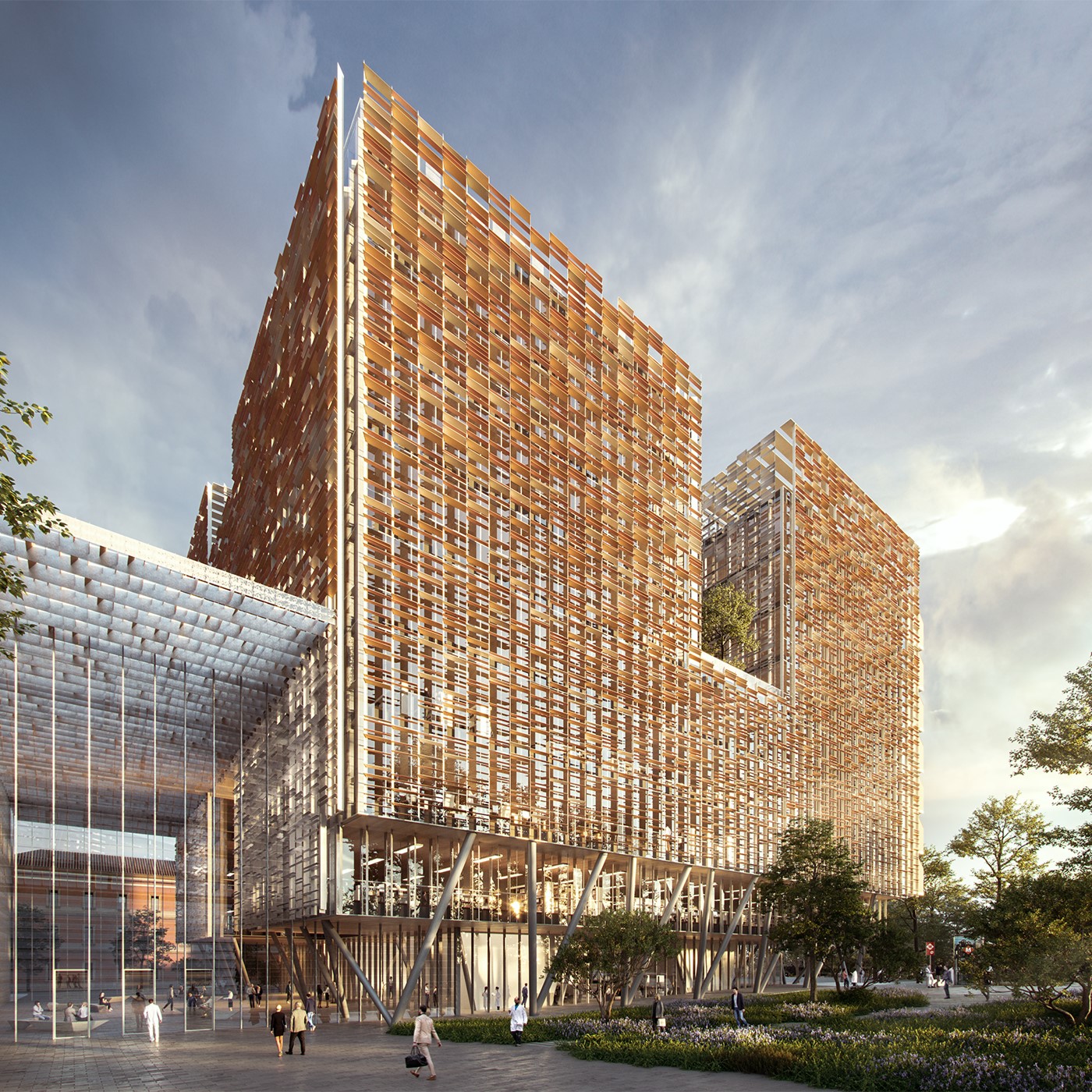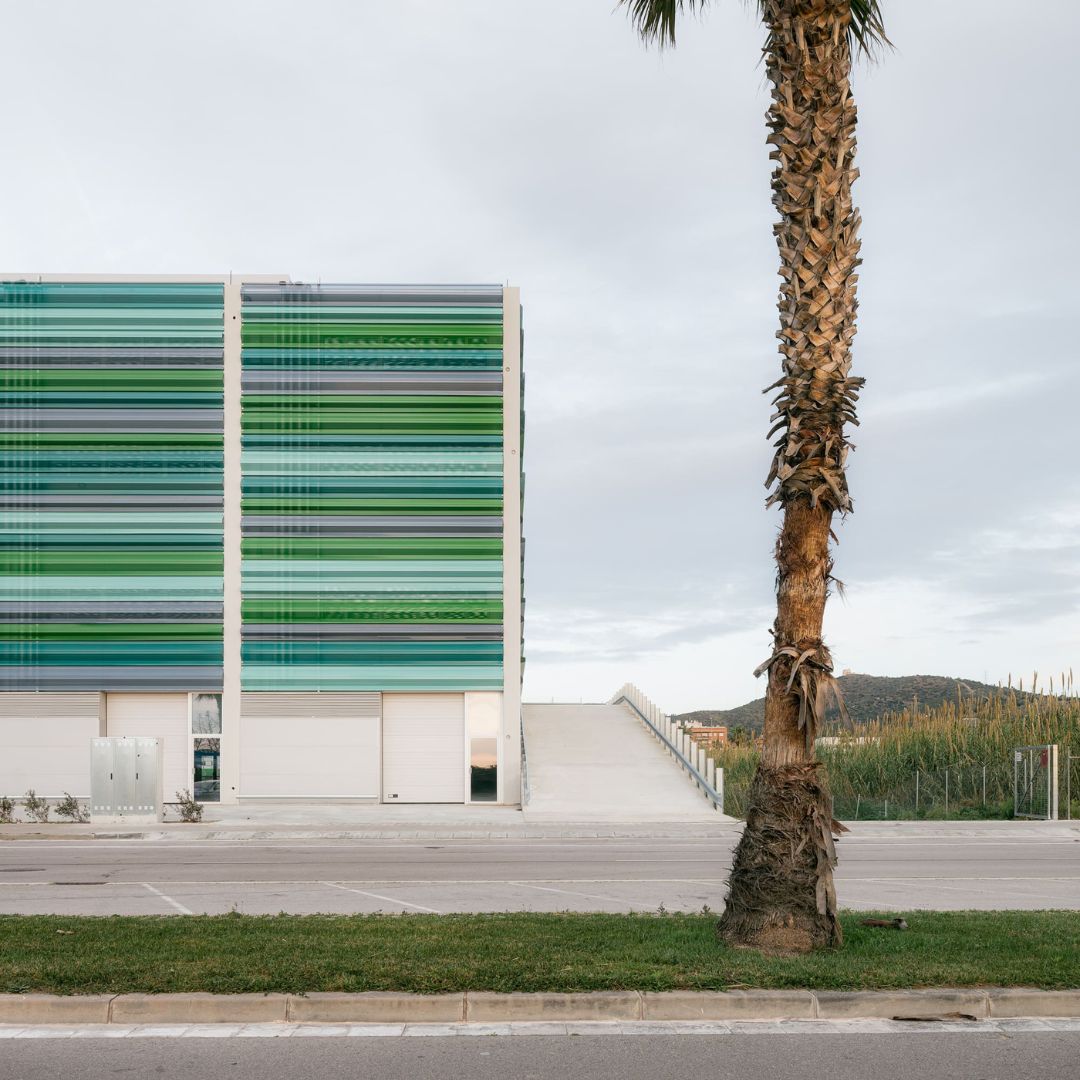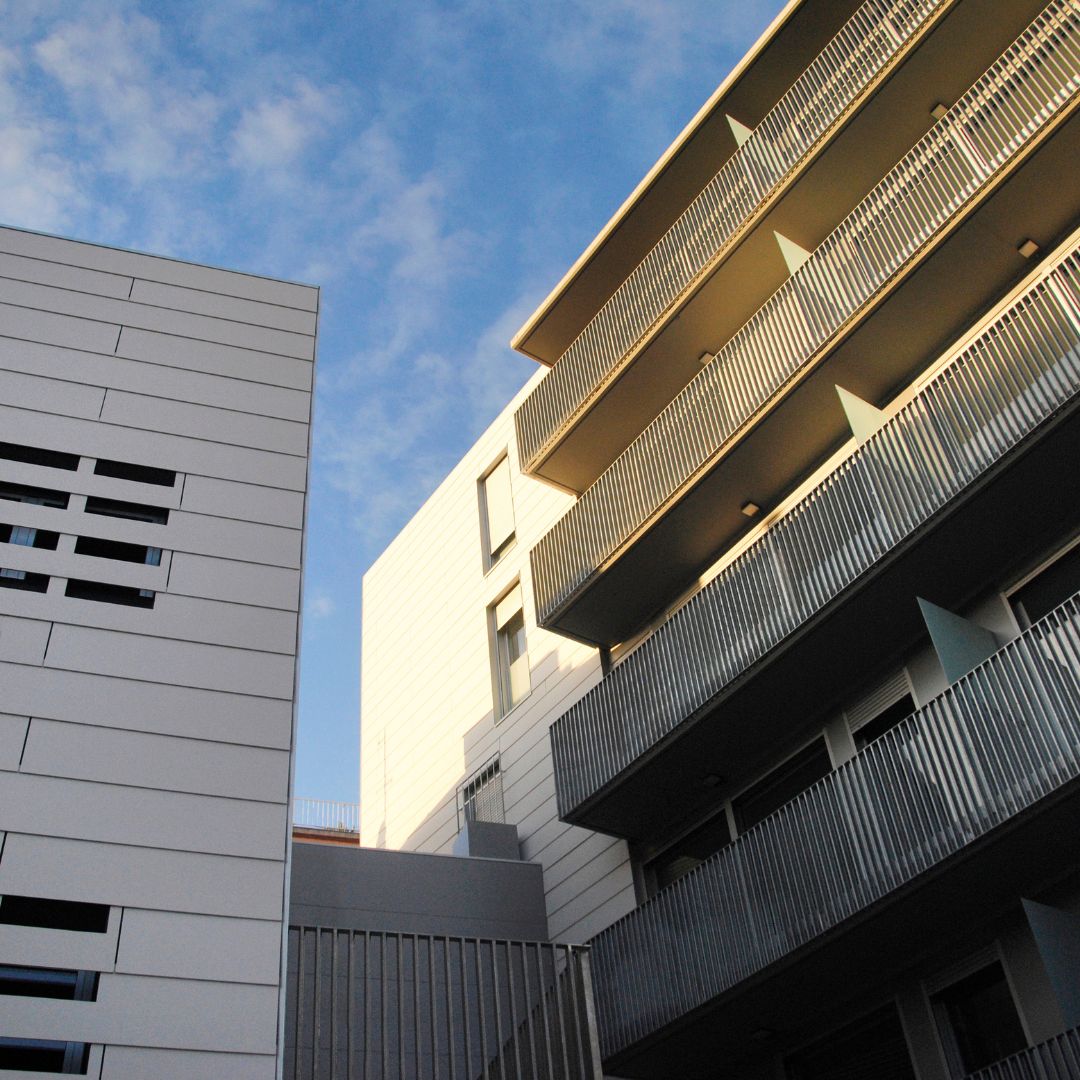Casas Betania: sustainability
Barcelona, Spain
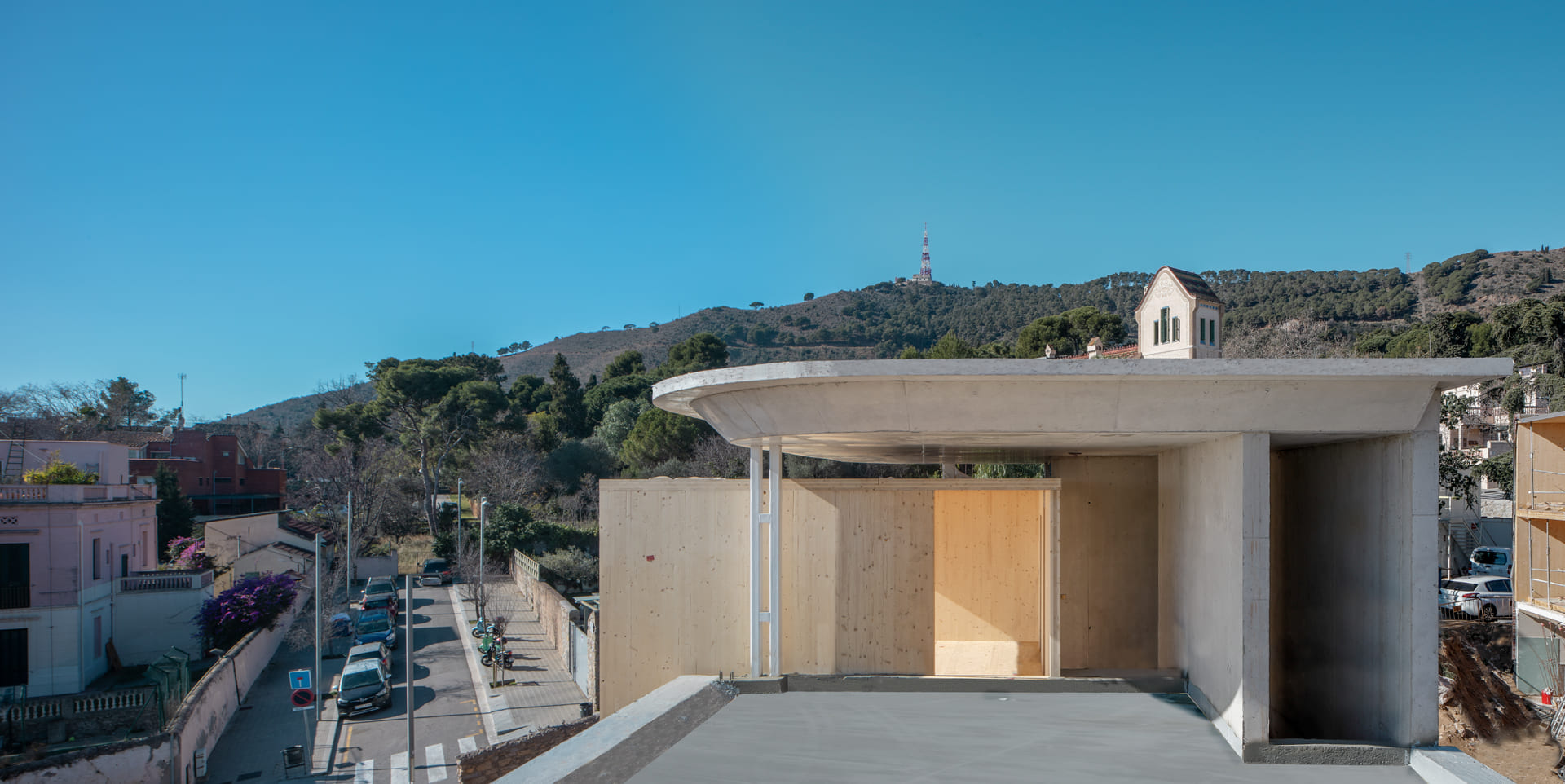
Energy label
CO2 emissions reduced/year
3,36 kg CO2/m2 year
Energy saved annually
10,15 kWh/m2 year
Recyclable or reusable materials
Promoting circular economy
Water supply
saved on irrigation
Rainwater collection + native species
Provision of water saved sanitary furniture
Total consumption 112l/day
Project details
Location: Barcelona, Spain
Year: 2023
Surface: ND
Typology: Tertiary
Category: R&D Collaboration, Applied Sustainability, Environmental Certifications
Certifications
Sustainable development goals
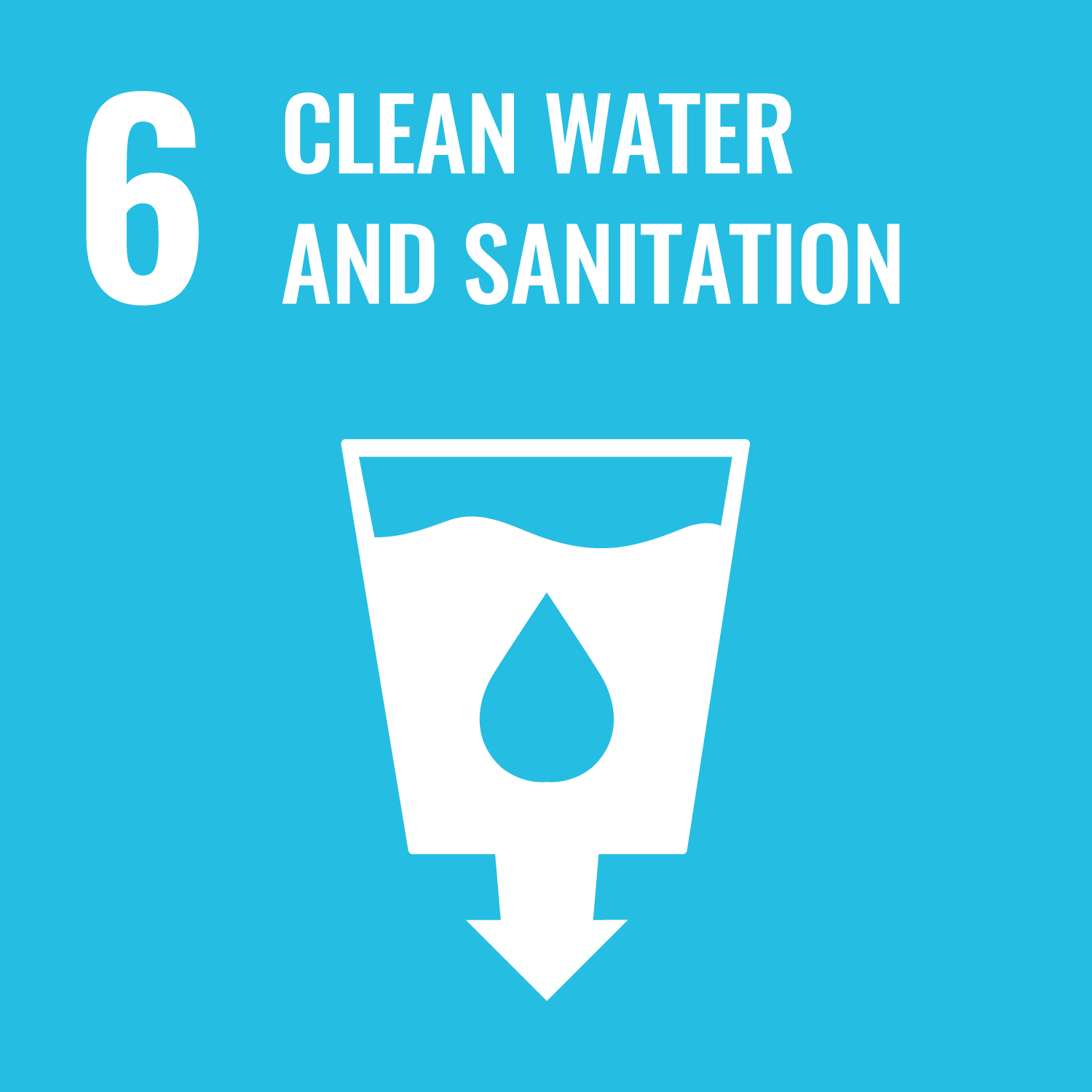
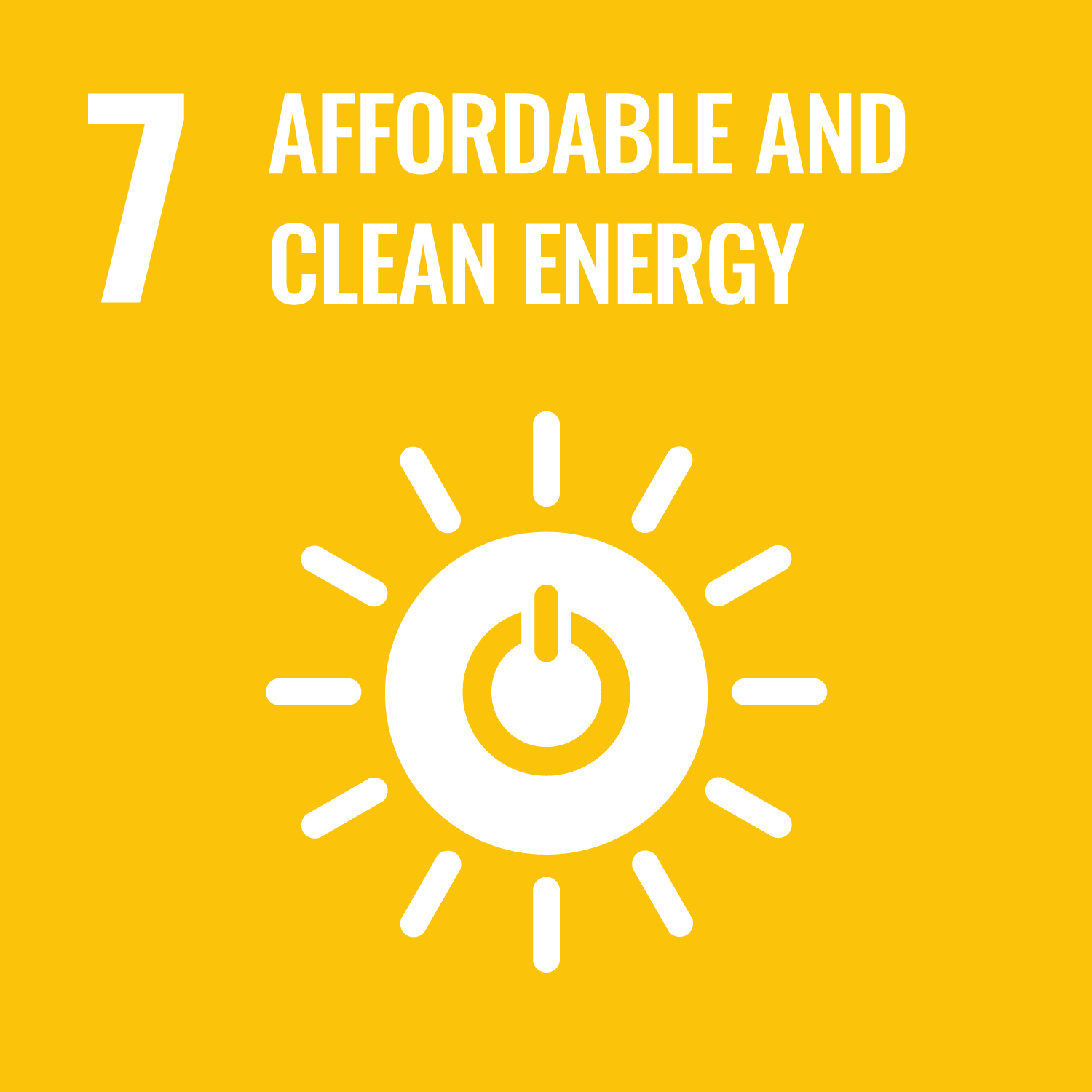
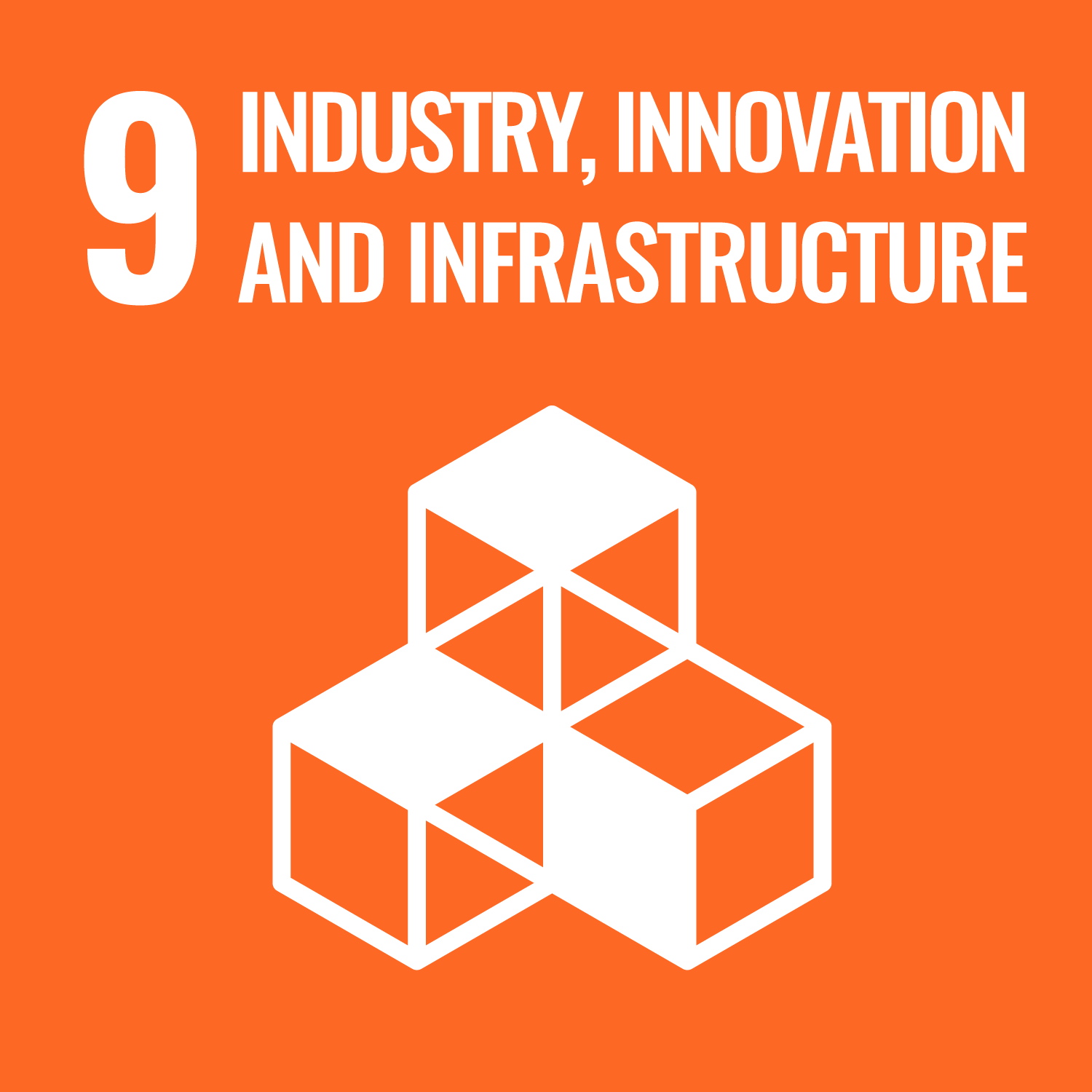
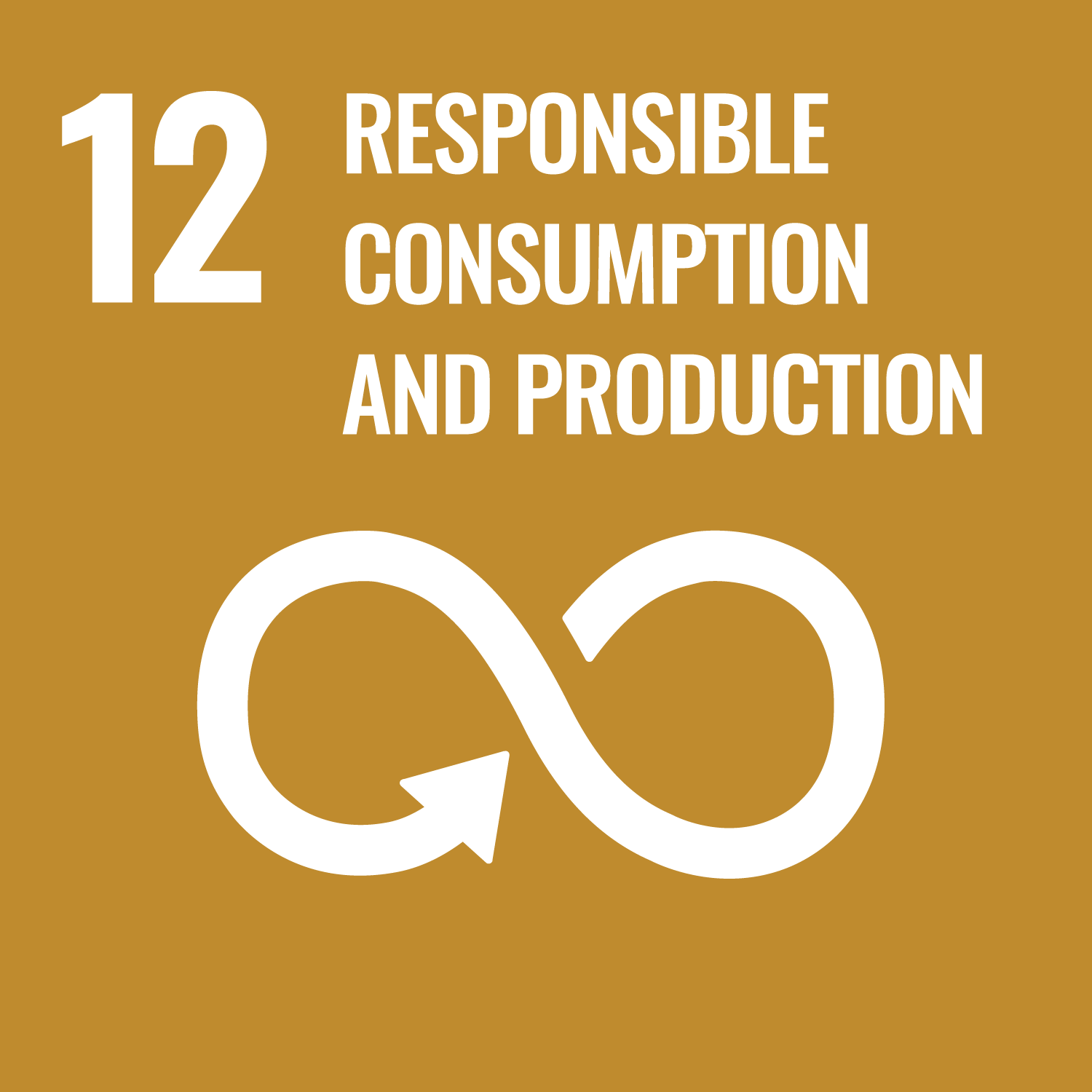
1. COMFORT AND HEALTH
The envelope is optimized to guarantee thermal comfort inside using the least amount of energy possible. This was achieved through solar protection on the facades with the highest solar incidence. These solar protections are made with horizontal slats that allow the passage of natural light, regulating direct solar incidence, so good natural lighting is maintained inside without the heat that the direct sun would produce. The roof is a walkable green roof. which in addition to taking advantage of the outdoor space and providing a space in connection with nature, improves the thermal insulation properties of the roof, reducing energy demand and the heat island effect.
2. ENERGY
The house has double-height spaces that allow good air circulation to have air renewal naturally supported by a system of Canadian wells that are located in the basement of the house, in this way the energy demand of the house is drastically reduced. the House.
In addition, it has an aerothermal system connected to a photovoltaic system, which covers the rest of the home’s energy demand from renewable energy.
3. CIRCULAR ECONOMY
The wood of the modules comes from an Austrian company, it is fir wood that has all production integrated with forest management.
The pieces come in large format and are cut to size directly from the factory, there is no subsequent handling upon arrival at the job site. The process from ordering to production takes approximately 5 weeks and it is ready for assembly. Subsequently, the assembly time on site is 1 week since no modifications have to be made to the parts.
The properties of the wood of the modules are structural and aesthetic simultaneously, they can be left as a final finish without the need for any coating. Reducing material loss is important because when it comes cut to final measurements, only the necessary amount of material is used.
If there is a change in measurement during the manufacturing process, it does not represent a waste of material, as it is cut in the workshop, it can be saved for some other project to which the measurements are adjusted and thus it is not wasted.
4. RESILIENCE & BIODIVERSITY
As in other projects of the office, the selection of bathroom furniture is a task dedicated to finding the best solution to reduce water consumption. In this case it was achieved thanks to the installation of toilets (toilets, showers, taps) with limited flow values. The project has a 30% reduction in water consumption in sanitary devices.
For outdoor areas, gardens, and green roofs, there is rainwater collection, which together with a selection of native vegetation and low irrigation demand, can be irrigated most of the year without having to take water from the municipal network. The water is captured on the roof and throughout the plot, so 100% of the rainwater that falls on the plot is captured and in this way, runoff is avoided.
The vegetation on the green roofs will be planted on ViversTer green trays with an integrated surface drip irrigation system.
5. CERTIFICATION AND RESEARCH
The project will have a class A energy label, despite not having any other environmental certification, it is designed to meet the criteria of the GREEN environmental certification.
The project is simultaneously accompanied by the firm’s ID+I department, analyzing the industrialization of the project to verify the cyclability of the systems and improve them for use in subsequent projects. Detailed work to adapt the specificity of a housing project of this typology with the possibilities of the construction industry and its assembly, assembly, and complementarity systems between each other.
Contribution to the SDGs
Level of influence: ● ● ● Direct – ● ● ○ Medium – ● ○ ○ Indirect

6. Clean water and sanitation
● ● ● 6.3 Improve water quality. Reduce pollution and wastewater.

7. Affordable and clean energy
● ● ● 7.2 Increase in renewable energy.
● ● ○ 7.3 Double the global rate of improvement in energy efficiency.

9. Industry, innovation and infrastructure
● ○ ○ 9.1 Sustainable infrastructure development.
● ● ● 9.4 Infrastructure modernization, clean technology.
● ○ ○ 9.5 Increase in scientific research, technological capacity.

12. Responsible consumption and production
● ○ ○ 12.4 Management of waste and chemical products.
● ● ○ 12.5 Waste prevention, reduction, recycling and reuse.
● ○ ○ 12.8 Ensure education for sustainable development.

